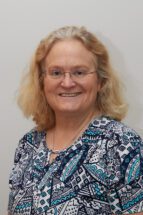When Susan Chapman, an associate professor in the Clemson University Department of Biological Sciences, and her collaborators were researching how short tails in birds evolved from their long-tailed dinosaur ancestors, they found something unexpected.
Inflammation, like that when a broken bone is healing, is needed to fuse the last few bones in the bird’s tail.
It was the first time scientists had found that inflammation played a role in normal bone development. The results were published in the journal PNAS last year.
Thanks to a three-year grant from the Keck Foundation, the researchers will expand their research to non-pathological inflammation in mammals to determine if the mechanism is universal.

The work could have implications for human health and skeletal development.
“It was a complete surprise that you needed inflammation to drive remodeling. That had never been shown before,” Chapman said. “We think this inflammatory mechanism occurs across multiple vertebrates, birds and mammals. We also propose that inflammation drives remodeling not just in the spine but in the limbs’ long bones as well.”
To confirm their findings, the scientists compared bird tail development to those treated with an anti-inflammatory steroid. The anti-inflammatory drug halted bone fusion — an astounding impact on an evolutionary mechanism developed over hundreds of millions of years.
Similar responses in mammals could raise concerns about the impact of corticosteroids or other anti-inflammatory drugs on human skeletal growth, particularly in children and young adults.
Good inflammation
Chapman said humans have growth plates, called epiphyseal plates, in the long bones of their arms and legs that allow growth. But those growth plates fuse when humans hit their late teens or early 20s. She and her collaborators hypothesize that inflammation is needed in the remodeling and fusing process to bring bone elongation to an end.
“Many people say that any inflammation is bad. But based on our earlier findings, inflammation has important roles in remodeling the skeleton, so there is such a thing as good inflammation,” she said. If you interfere with good inflammation, you may end up with long-term health consequences, and that’s what we want to bring to the consciousness of physicians, that you must be careful in giving growing people, all the way up to early adulthood, steroids long term because you may be interfering with their spine and long bone development.”
Anti-inflammatory drugs are commonly used to treat conditions such as asthma.
“We’re still learning which fusions are susceptible to anti-inflammatory drugs,” Dana Rashid, a Montana State University research scientist and the study’s principal investigator, said. “This is really important to know, especially for kids who are on long-term corticosteroids and other anti-inflammatory drugs. We need to know what’s happening with their skeletons.”
New avenues of medical research
The scientists will also explore necroptosis, a form of inflammatory programmed cell death in living bodies. Necroptosis is also often correlated with diseases like bone cancer and ankylosing spondylitis, which results in pathogenic fusion of the vertebrae in the spine.
Painful ankylosing spondylitis symptoms typically begin in early adulthood. Nearly 3 million Americans, or almost one in every 100 people, have the inflammatory disease.
Identifying the connection between inflammation and necroptosis could lead to new avenues of medical research.

In the new study, Chapman will continue researching inflammation and bone fusion in chickens. Kim Cooper, a professor at the University of California San Diego, will work with jerboas, a bipedal, hopping desert rodent that looks like a small kangaroo and lives in North Africa and Asia. She introduced jerboas as a model organism in the United States. Jerboas have bone fusions in multiple locations, including the limbs’ long bones and the spine.
In addition to studying corticosteroids, the researchers will examine whether other anti-inflammatory drugs, such as NSAIDs (nonsteroidal anti-inflammatory drugs), interfere with the inflammatory processes, Chapman said.
“We’re trying to take this back to evolution. Bone fracture healing has been around for a very long time. We had a mechanism to heal fractures as soon as we had bones. And we think this bone fracture mechanism has been co-opted in bone fusion because that’s what biology does,” Chapman said. “It’s reused this mechanism for normal development, and no one suspected that before our work.”
The W. M. Keck Foundation was established in 1954 in Los Angeles by William Myron Keck, founder of The Superior Oil Company. One of the nation’s largest philanthropic organizations, the W. M. Keck Foundation supports outstanding science, engineering and medical research. The Foundation also supports undergraduate education and maintains a program within Southern California to support arts and culture, education, health and community service projects.
This article contains information from a media release by Reagan Cotton of the Montana State University News Service.
Get in touch and we will connect you with the author or another expert.
Or email us at news@clemson.edu

